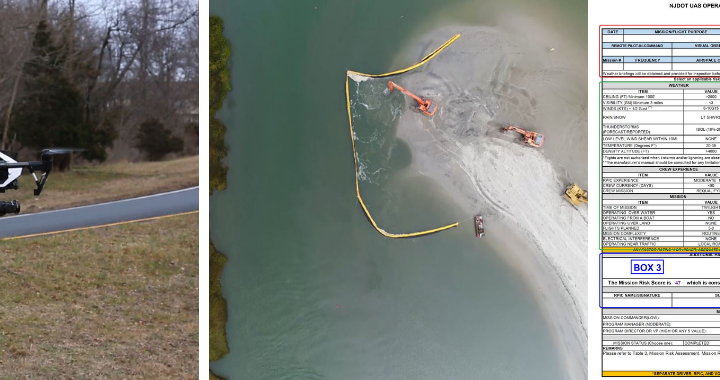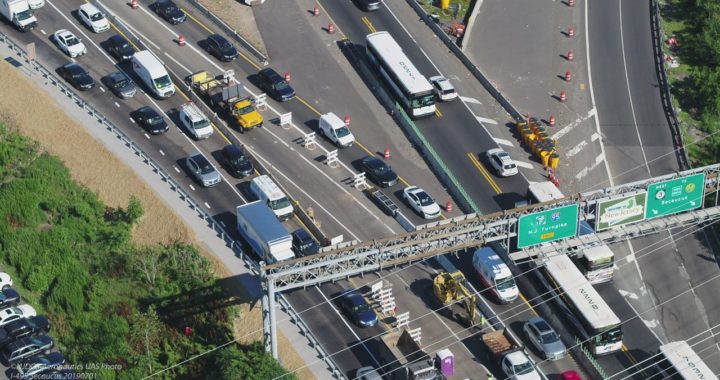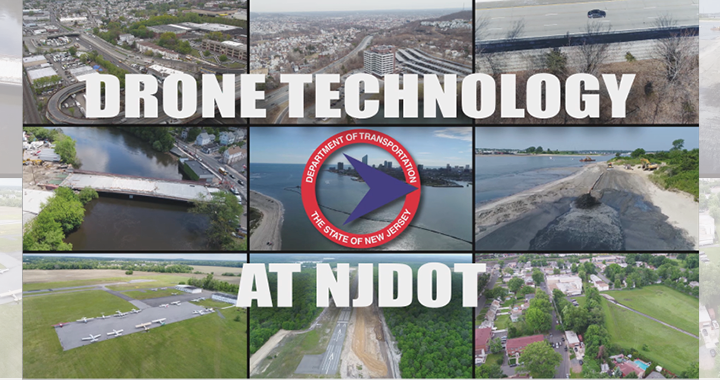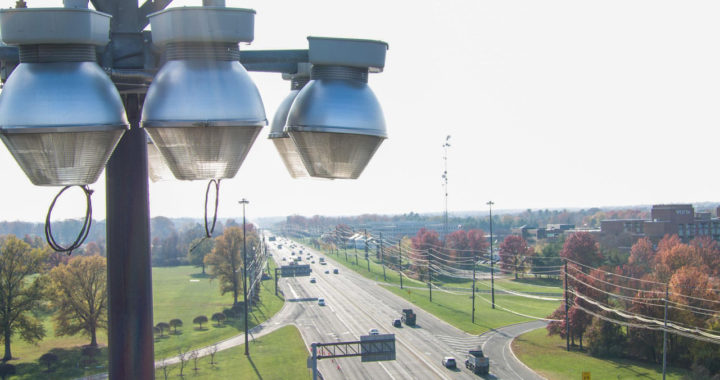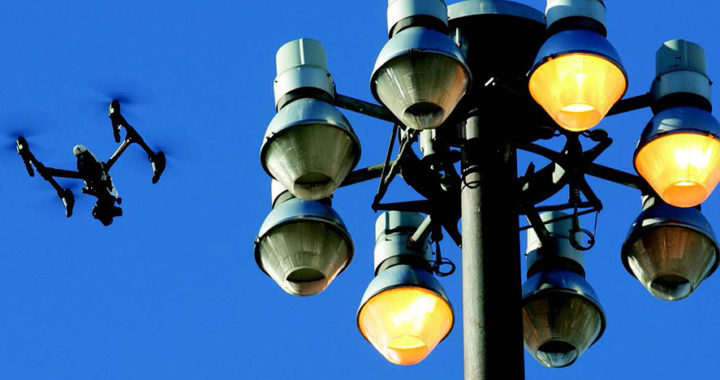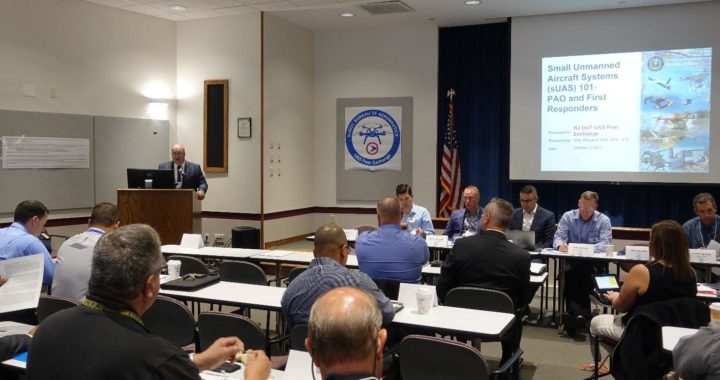What is Unmanned Aerial Systems (UAS)?
UAS offer several transformative aspects for highway transportation, enhancing safety and productivity, while also reducing cost.
Unmanned aerial systems (UAS), sometimes referred to as drones, are multi-use aircraft controlled from a licensed operator on the ground. The benefits of UAS are wide ranging and impact nearly all aspects of highway transportation—replacing boots on the ground, increasing accuracy, speeding up data collection, and providing access to hard-to-reach locations.
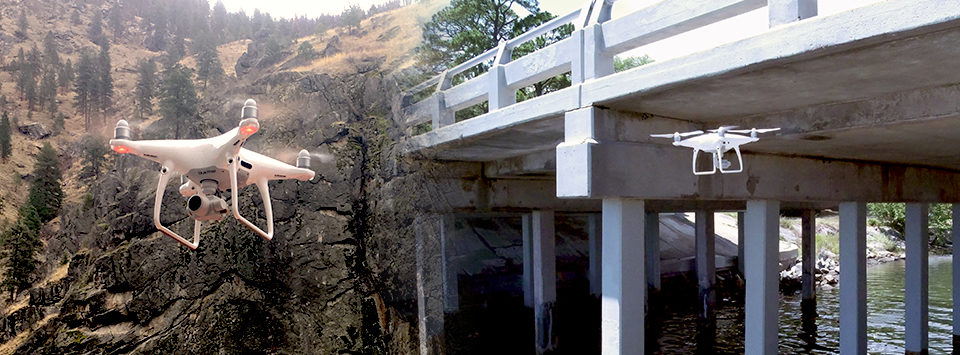
UAS provide high-quality survey and data mapping that can be collected automatically or remotely. Large areas can be mapped relatively quickly in comparison to traditional survey and mapping practices. Other uses include survey and imagery as part of emergency response events, where traditional surveying and mapping practices may be inadequate or sites impossible to access. UAS can supplement conventional activities, such as bridge safety inspection and routine construction inspection, to increase safety and collect data from otherwise unattainable perspectives.
UAS improve operations, construction, inspection, and safety by collecting data needed to design, build, and operate the highway system. Bridge inspection enhanced by UAS improves safety for the inspection team and the traveling public by reducing the need for temporary work zones and specialized access equipment, which can also be very cost effective. Construction inspection with UAS allows for a bird’s eye view of a project’s progress and for the development of three-dimensional (3D) terrain models that document the construction process and assist in assessment of earthwork quantity measurement.
UAS technology gives State departments of transportation (DOTs) eyes-in-the-sky during incident responses for roadway disturbances and for damage assessments following fires, earthquakes, and bridge hits. It allows States to obtain quality data to make better-informed decisions, all collected from a relatively low-cost platform.
Learn more about this EDC-5 Innovation.
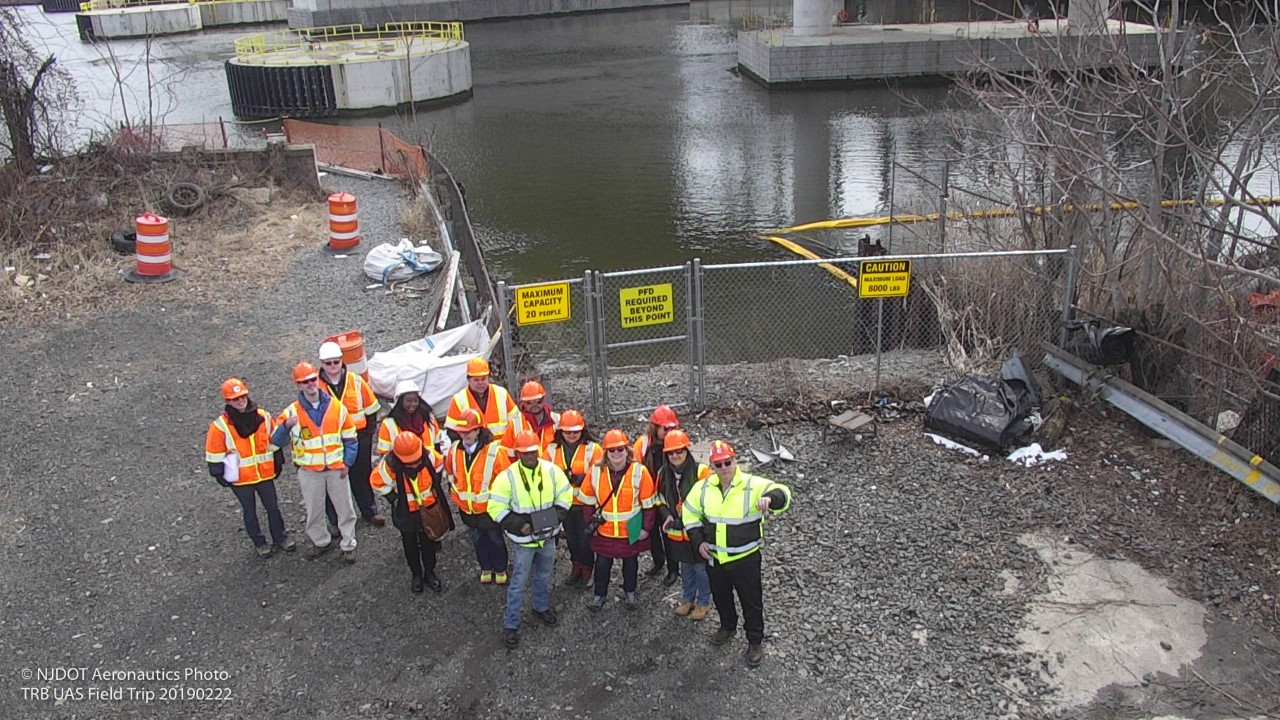
Integrating UAS in NJ Transportation Operations
Stage of Innovation: INSTITUTIONALIZED (Decenber 2020)
NJ has been a national leader in UAS and initiated several activities before and since EDC-5:
Established Drone Program. NJDOT’s Division of Multi-Modal Services established a drone program and hired a UAS Coordinator position in Aeronautics to lead NJDOT’s UAS initiatives.
Leveraged Federal Financial Assistance. NJDOT successfully applied for three FHWA grants, including:
FHWA Tech Transfer Deployment Funds to hold a UAS Peer Exchange on Best Practices. A national UAS Peer Exchange was held based on the successful NJ model and NJDOT’s UAS Coordinator presented at the event in Washington DC.
FHWA STIC Incentive Program Funding to purchase equipment and training to evaluate the use of UAS for structural inspections, Traffic Incident Management (TIM), surveying and accelerating construction projects, determining flooding adjacent to state highways, and bridge deck thermography mapping.
FHWA State Planning & Research Program funds for research into Best Practices, Policies and Procedures to recommend potential legislative and regulatory remedies, enforcement and compliance strategies and tools, and training products for engineers and consultants involved in UAS operations.
Conducted Research and Field Demonstration Studies. Integrating UAS in transportation has been the subject of research and field studies to demonstrate the use case for high-mast light pole inspections, traffic incident management and monitoring, dredging and beach replenishment, photogrammetry, bridge inspection, and watershed management, among other topics.
What's Next?
In 2019 after the kick-off EDC-5, NJDOT established a protocol to streamline requests for UAS usage on projects through the SimpliGov online system. The agency also developed an internal Night Training Powerpoint Course to fulfill the FAA COA night authorization requirements, helping to support future requests for NJDOT UAS operations at night. Additionally, the agency created an interactive UAS display for "Take Your Child to Work Day" to promote staff and youth education of the program's work. This display was done as part of the NJDOT Commitment to Communities initiative and under the Bureau of Aeronautics' mandate to promote aviation awareness and showcase UAS unit benefits. Funds were also used to create a NJDOT UAS Program video highlighting the innovation and benefits of the program for the state.
NJDOT pursued and received STIC Incentive Funding to further build the capacity of the UAS Program. Through investments in equipment and training, NJ foresees UAS contributing to innovations through enhanced processing capability for 3D models, advanced training courses for photogrammetry, aerial photography and videography, and, thermal imaging capability for watershed surveys and wildlife counts under bridges, among other activities.
In 2020, the NJDOT UAS program has supported more than a dozen construction management projects. The UAS Program is also working with Operations on scope of work for a future STIC Grant to develop new UAS technologies for traffic management.
The NJDOT UAS Program was featured in the FHWA EDC-5 Webinar Series: (SR200). The presentation, Developing a UAS Program: From Startup to Additional Tasking, highlighted key challenges, benefits and lessons in standing up a UAS Program at a state DOT.
The NJDOT UAS Program was featured in the UAS for Traffic Monitoring Applications webinar as part of the EDC-5 series of webinars in December 2020.
Click for the Fact Sheet: Unmanned Aerial Systems
Click for Infographic: Benefits of UAS for High Mast Inspection
UNMANNED AERIAL SYSTEMS: NEW & NOTEWORTHY

